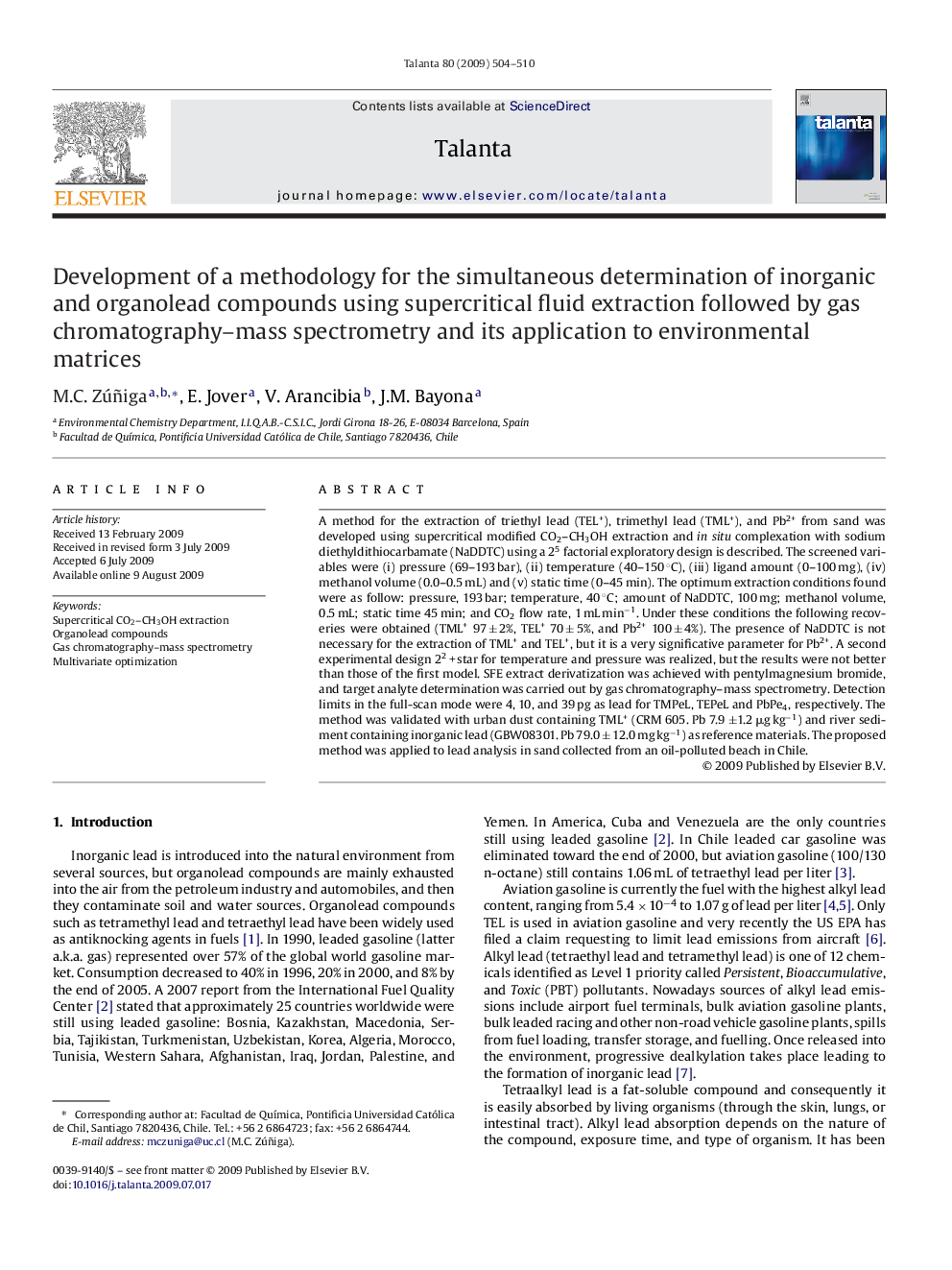| Article ID | Journal | Published Year | Pages | File Type |
|---|---|---|---|---|
| 1246721 | Talanta | 2009 | 7 Pages |
A method for the extraction of triethyl lead (TEL+), trimethyl lead (TML+), and Pb2+ from sand was developed using supercritical modified CO2–CH3OH extraction and in situ complexation with sodium diethyldithiocarbamate (NaDDTC) using a 25 factorial exploratory design is described. The screened variables were (i) pressure (69–193 bar), (ii) temperature (40–150 °C), (iii) ligand amount (0–100 mg), (iv) methanol volume (0.0–0.5 mL) and (v) static time (0–45 min). The optimum extraction conditions found were as follow: pressure, 193 bar; temperature, 40 °C; amount of NaDDTC, 100 mg; methanol volume, 0.5 mL; static time 45 min; and CO2 flow rate, 1 mL min−1. Under these conditions the following recoveries were obtained (TML+ 97 ± 2%, TEL+ 70 ± 5%, and Pb2+ 100 ± 4%). The presence of NaDDTC is not necessary for the extraction of TML+ and TEL+, but it is a very significative parameter for Pb2+. A second experimental design 22 + star for temperature and pressure was realized, but the results were not better than those of the first model. SFE extract derivatization was achieved with pentylmagnesium bromide, and target analyte determination was carried out by gas chromatography–mass spectrometry. Detection limits in the full-scan mode were 4, 10, and 39 pg as lead for TMPeL, TEPeL and PbPe4, respectively. The method was validated with urban dust containing TML+ (CRM 605. Pb 7.9 ±1.2 μg kg−1) and river sediment containing inorganic lead (GBW08301. Pb 79.0 ± 12.0 mg kg−1) as reference materials. The proposed method was applied to lead analysis in sand collected from an oil-polluted beach in Chile.
